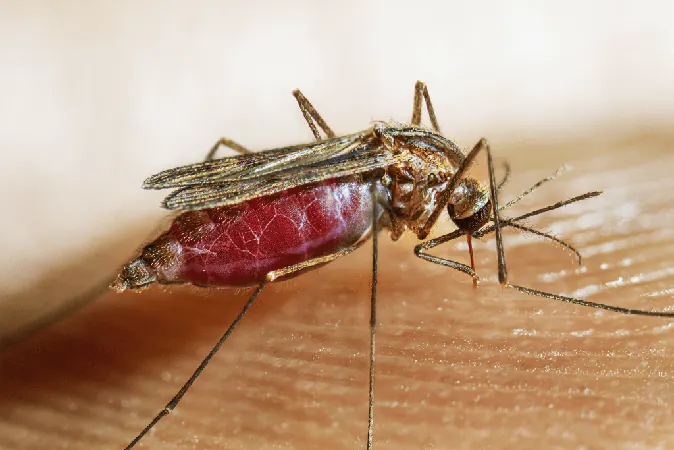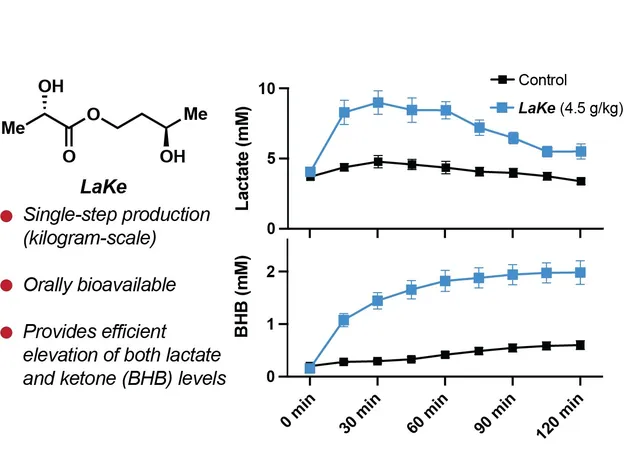
Could Iowa's Mosquito Research Be the Key to Preventing Malaria's Return to America?
2024-10-09
Author: Arjun
Introduction
When the first Europeans and enslaved Africans arrived in the Americas, they inadvertently brought with them the microscopic Plasmodium parasites responsible for malaria. This was a perfect match for native Anopheles mosquitoes, which now play a vital role in transmitting the disease between humans.
Historical Context
Historically, malaria was endemic in the United States until it was declared eliminated in 1951 by the National Malaria Society. Yet, there’s a resurgence in malaria cases, particularly due to international travelers bringing the parasites back home. Shockingly, for the first time in decades, the U.S. recorded locally transmitted cases of malaria last year—a total of seven incidents that alarmed public health officials.
Current Risks and Trends
Despite authorities maintaining that the likelihood of malaria re-establishing itself is low, the dynamic of increased international travel, global commerce, and climate change could elevate the risk. Recent studies show a worrying trend: over 2,000 cases of travel-associated malaria are reported in the U.S. annually according to the Centers for Disease Control and Prevention (CDC). With rising temperatures fostering ideal breeding conditions for Anopheles mosquitoes, the conditions for localized outbreaks could worsen.
Iowa State University's Research
Recognizing this potential threat, researchers at Iowa State University conducted a comprehensive 20-year study of Anopheles mosquito ecology in Iowa, published in the Journal of Medical Entomology. Lead researcher Dr. Ryan C. Smith emphasized a critical gap in our understanding of Anopheles ecology in the Americas, highlighting that it has been over 70 years since detailed research on Anopheles populations and their habitats has been conducted.
Findings of the Study
The study utilized extensive mosquito surveillance data collected since 2004, identifying which Anopheles species are present in Iowa and their environmental impacts. Six different species were documented, with An. punctipennis and An. quadrimaculatus being the most common. Alarmingly, all these species, except An. earlei, are potential vectors for the malaria parasite, meaning they could facilitate the spread of disease if they bite an infected individual.
Population Dynamics
Interestingly, the study found that the distribution of these mosquitoes did not significantly change over the 20 years, suggesting they are resilient to urban development. Seasonal population dynamics showed that while An. punctipennis emerges earlier and increases steadily, An. quadrimaculatus has a more gradual emergence with a peak late in the summer. Also noteworthy is the role of precipitation in boosting An. punctipennis populations, which thrive in areas with abundant water sources.
Implications for Other States
Dr. Smith believes this research could serve as a framework for other states, encouraging them to carry out similar studies to prepare for potential malaria outbreaks and other mosquito-borne diseases. While the current risk of a malaria resurgence in the U.S. may still be low, the data gleaned from this study increases awareness and preparedness for emerging threats tied to climate change and globalization.
Conclusion
What does this mean for public health? As the United States adapts to a new reality shaped by climate change and evolving travel patterns, the need for vigilance and robust mosquito surveillance efforts has never been more vital. With insights gained from studies like Iowa's, we might just be able to stay one step ahead in the fight against malaria's potential return. Stay informed and keep an eye on those pesky mosquitoes! You never know when they might pose a serious threat to your health.



 Brasil (PT)
Brasil (PT)
 Canada (EN)
Canada (EN)
 Chile (ES)
Chile (ES)
 España (ES)
España (ES)
 France (FR)
France (FR)
 Hong Kong (EN)
Hong Kong (EN)
 Italia (IT)
Italia (IT)
 日本 (JA)
日本 (JA)
 Magyarország (HU)
Magyarország (HU)
 Norge (NO)
Norge (NO)
 Polska (PL)
Polska (PL)
 Schweiz (DE)
Schweiz (DE)
 Singapore (EN)
Singapore (EN)
 Sverige (SV)
Sverige (SV)
 Suomi (FI)
Suomi (FI)
 Türkiye (TR)
Türkiye (TR)